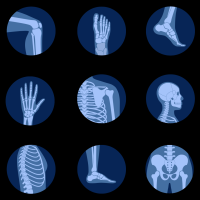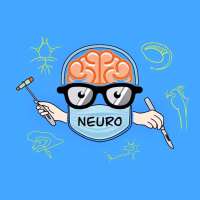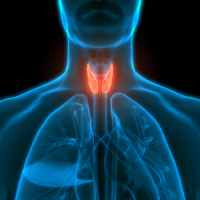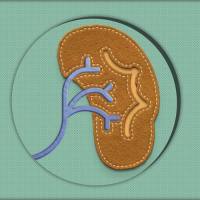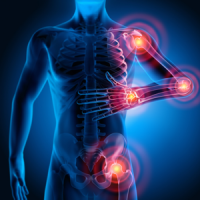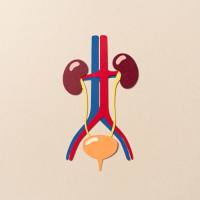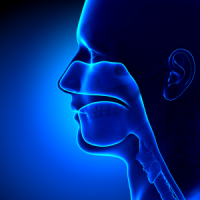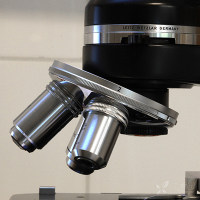2003.10.红皮杂志:MRI对NPC靶区勾画和调强放疗的影响
作者:Emami, Bahman; Sethi, Anil; Petruzzelli, Guy J.
杂志全名: International Journal of Radiation Oncology*Biology*Physics
年份,卷(期): 起止页码: 2003,57(2):481-488.
PMID: 12957260
英文摘要:Purpose: To compare CT and MRI target volumes for nasopharyngeal carcinoma (NPC) and evaluate the role of intensity-modulated radiotherapy (IMRT) in treating composite CT+MRI targets.
Methods and Materials: CT and T1/T2-weighted MRI scans were obtained for 8 consecutive NPC patients. Using CT, MRI, and fused CT/MRI, various target volumes (gross target volume, clinical target volume, and planning target volume [PTV]) and critical structures were outlined. For each patient, three treatment plans were developed: (1) a three-dimensional conformal RT (3D-CRT) plan using CT-based targets; (2) a 3D-CRT plan using composite CT+MRI targets; and (3) a IMRT plan using CT+MRI targets. The prescription dose was 57.6 Gy and 70.2 Gy to the initial and boost PTV, respectively. Treatment plans were compared using the PTV dose to 95% volume (D95), critical structure dose to 5% organ volume (D5), and mean dose.
Results: Compared with CT, the MRI-based targets were 74% larger, more irregularly shaped, and did not always include the CT targets. For CT-based targets, 3D-CRT plans, in general, achieved adequate target coverage and sparing of critical structures. However, when these plans were evaluated using CT+MRI targets, the average PTV D95 was ~60 Gy (14% underdosing), and critical structure doses were significantly worse. The use of IMRT for CT+MRI targets resulted in marked improvement in the PTV coverage and critical structure sparing: average PTV D95 improved to 69.3 Gy, brainstem D5 to <43 Gy (19% reduction), spinal cord D5 to <37 Gy (19% reduction), and the mean dose to the parotids and cochlea reduced to below tolerance (23.7 Gy and 35.6 Gy, respectively).
Conclusion: CT/MRI fusion improved the determination of target volumes in NPC. In contrast to 3D-CRT, IMRT planning resulted in significantly improved coverage of composite CT+MRI targets and sparing of critical structures.
中文译文:
目的:比较鼻咽癌的CT和MRI靶区,评价IMRT在治疗CT/MRI融合靶区中的作用。
方法和材料:对8个连续的鼻咽癌病人进行CT和T1/T2加权的MRI扫描。使用CT、MRI和CT/MRI融合图像勾画不同的靶区(GTV, CTV和PTV)和危险器官。对每个病人做3个治疗计划:(1)使用CT勾画的靶区做3D-CRT计划:(2)使用CT/MRI融合勾画的靶区做3D-CRT计划;(3)用CT/MRI融合勾画的靶区做IMRT计划。PTV开始给予 57.6Gy,再推量至70.2 Gy。比较不同计划的95%PTV的剂量、危险器官5%体积的剂量和平均剂量。
结果:同CT相比,用MRI勾画的靶区大74%,形状更加不规则,并且不总是包括CT的靶区。基于CT靶区的3D-CRT计划,一般能获得足够的靶区剂量覆盖,避开危险器官。然而,当这些计划用CT/MRI融合的靶区来评价时,PTV平均D50是~60Gy(剂量偏低14%),而危险器官的剂量分布更差。基于CT/MRI融合的IMRT计划明显改善PTV的剂量分布,避开危险器官:PTV平均D50是69.3Gy,脑干D5<43Gy(减少19%),脊髓D5<37Gy(减少19%),腮腺和耳蜗的平均剂量均低于耐受剂量(分别是23.7Gy和35.6Gy)。
结论:CT/MRI融合能改进鼻咽癌的靶区勾画。与3D-CRT相比,IMRT能明显改善CT/MRI融合靶区的剂量分布,避开危险器官。
版权声明:本译文文字内容版权归丁香园网站( http://www.dxy.cn )所有,未经本网站书面许可,请勿转载或摘编。




